Cork is the ‘real’ capital of Ireland. Well, that’s what Cork people would have you believe, and if you judge this friendly, vibrant city on its own terms, you might agree. As a student, it has everything you need. And the surrounding countryside and coastline are famous for their natural beauty.
Cork city has a charm and unique character which easily explains its enduring appeal to international students. It’s smaller than Dublin but can feel bigger, in part because of the sheer scale of the glittering River Lee as it cuts a swathe through the city to the coast just beyond. Approaching via the train or road from the north, you can’t miss the river and the colourful terraces of period houses perched on the hills above. This is a city that, right from the start, seems to say ‘all are welcome here.’

This is a city shaped by its river – the Lee
And they are.
As the home to University College Cork (rated among the top 2% of universities worldwide), the Cork Institute of Technology and Crawford College of Art & Design, Cork is almost as much in demand for student housing as Dublin, but there is plenty to choose from, whether it’s a private rental in a house share or with a family, or purpose-built student accommodation on or off campus. With a very busy arts, food and retail scene, it’s also not usually too difficult to find part-time work in one of the many bars, shops and cafes, though the uncertainty that Covid has brought with it has made it more tricky.
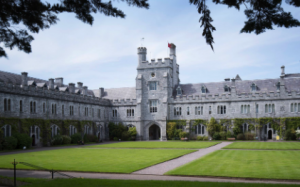
Historic UCC – in the top 2% of universities worldwide
Cork is a very walkable city, but unlike Dublin, has no tram, so commuters rely on the extensive bus network, private cars or – like many cities now – bicycles. For those unfamiliar with the city, this is a useful guide for getting around
As for any student coming from abroad, you will need to have a valid visa, a Public Service number if you want to work (see our guide to getting one here) health insurance cover (see our guide here) and, if not from the EU or Switzerland, you will also need to register with the Garda National Immigration Bureau (see info here )
Once the formalities are sorted and you have a place to live, it’s time to explore!
Here are some of the highlights of Cork city and county
In the city:

The historic and beautiful English Market (Photo: Shutterstock)
The English Market Trading since 1788, this is such a landmark for fresh food that it was included on Queen Elizabeth II’s State Visit to Ireland in 2011. The English market arguably packs in more atmosphere per square inch than any other market in Ireland, with its rich architecture and its many stalls with their vibrant displays of fresh produce, much of it from local producers famous for their cheese, vegetables, meat, fish and, of course, baked goods! Even if you don’t need or want to buy anything, it’s a wonderful place to grab a coffee and people watch.
Fitzgeralds Park The River Lee is a natural draw for walkers, and this quiet 18-acre urban riverside park is one of the highlights, with its central fountain, many sculptures, and tree-lined avenues. It is also home to Cork Public Museum whose collections cover the economic, social and municipal history of the city and surrounding area from the Mesolithic period onwards, with particular emphasis on Civic Regalia and the trades and crafts of the 19th and 20th centuries.
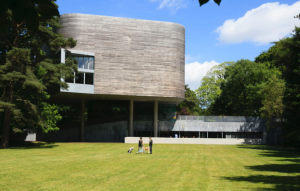
The award-winning Glucksman Gallery at UCC
The Glucksman Gallery Housed in a graceful yet simple concrete and glass building designed by leading Irish architect O’Donnell + Tuomey, the Glucksman is a leading national and international visual arts gallery located on the campus of University College Cork. It is also home to the very popular Bobo Cafe, where outdoor seating allows you to dine riverside on the Lee.
Outside the city and in Cork County
Cobh (pronounced ‘cove’) This charming seaside village, located on an island in Cork City harbour, holds great significance in Irish history as a crucible for the flood of emigration prompted by the Great Famine of the 1840s. It was also the last port of call in 1912 for the doomed Titanic on its maiden voyage to the U.S. For a small place, Cobh is packed with attractions, including the Cobh Heritage Centre and the Titanic Experience.
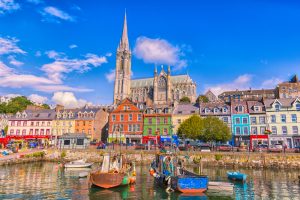
The beautiful and colourful town of Cobh is full of history (Photo: Shutterstock)
Fota Wildlife Park Just north of Cobh, this park (also situated on an island) offers the visitor 100 acres in which to see animals from all over the world. One of the country’s Top Ten visitor attractions, it offers lots to see and do and at only €16.50 for an adult, is also great value. Stay all day and walk around, and to save money, bring a packed lunch and a drink. Note: Covid restrictions mean that currently, all tickets must be pre-purchased online and a visiting time booked.
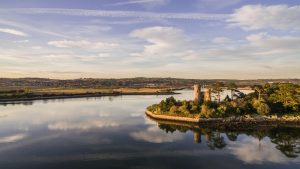
Fota Wildlife Park – picturesquely situated on an Island and a hugely popular attraction (photo: Shutterstock)
Day trips
Too many to mention. Full of picturesque villages, Cork County is enormous and takes in every kind of landscape, from the rugged, almost treeless beauty of the Beara Peninsula, to the green folded fields of Ballyhoura, and everything in between. There is something for everyone, whether it’s enjoying a pint in one of the colourful pubs in Kinsale, or kayaking on Lough Hyne (especially magical at night).
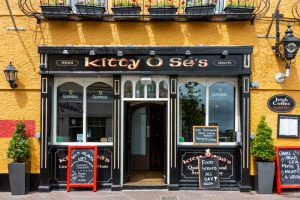
Kitty O Se’s – one of many famous pubs in the seaside town of Kinsale (photo: Shutterstock)
As is often the case, some of the best advice comes from locals, including this guide from a native Corkonian. As you’ll find if you choose it as a place to study, they’re always more than happy to talk about their city!

